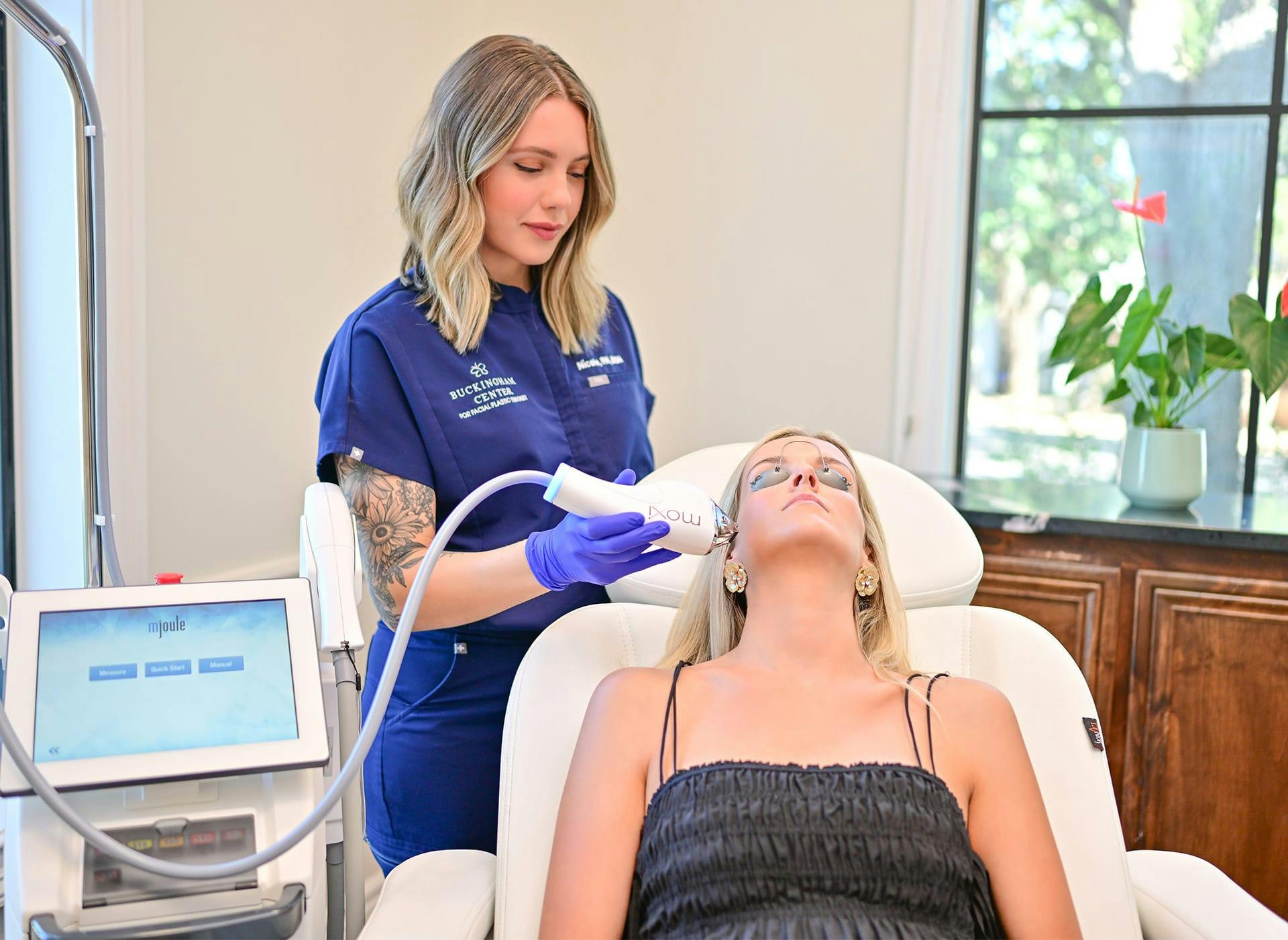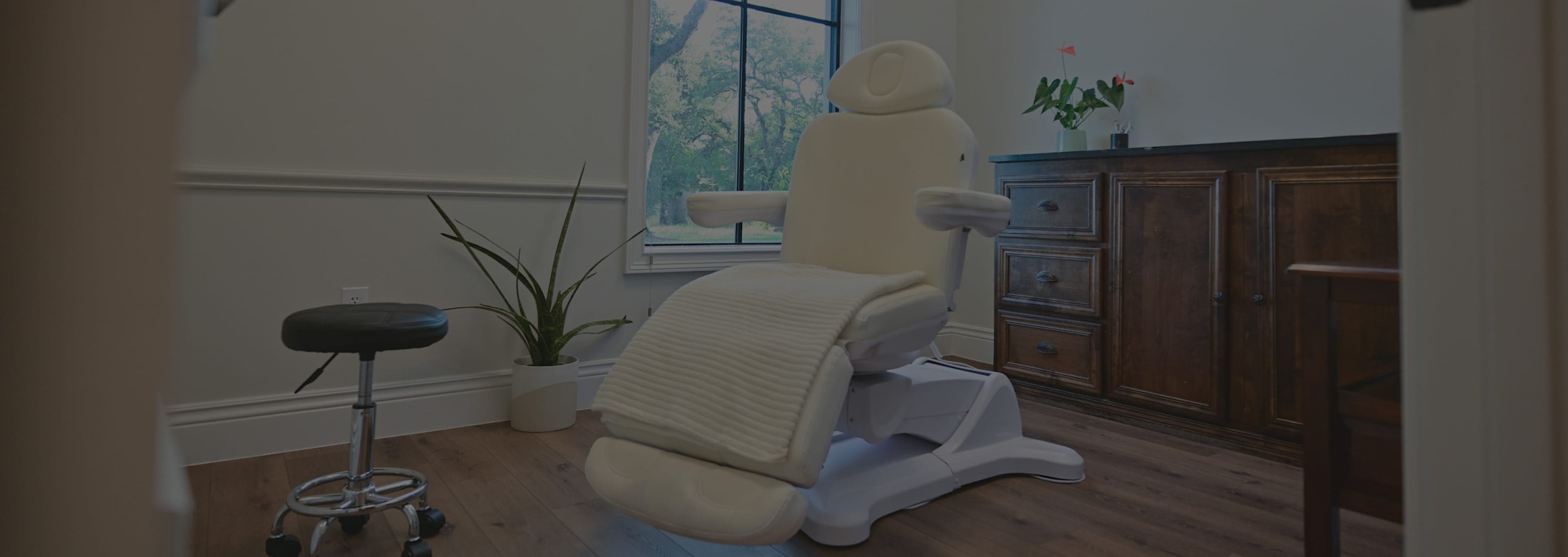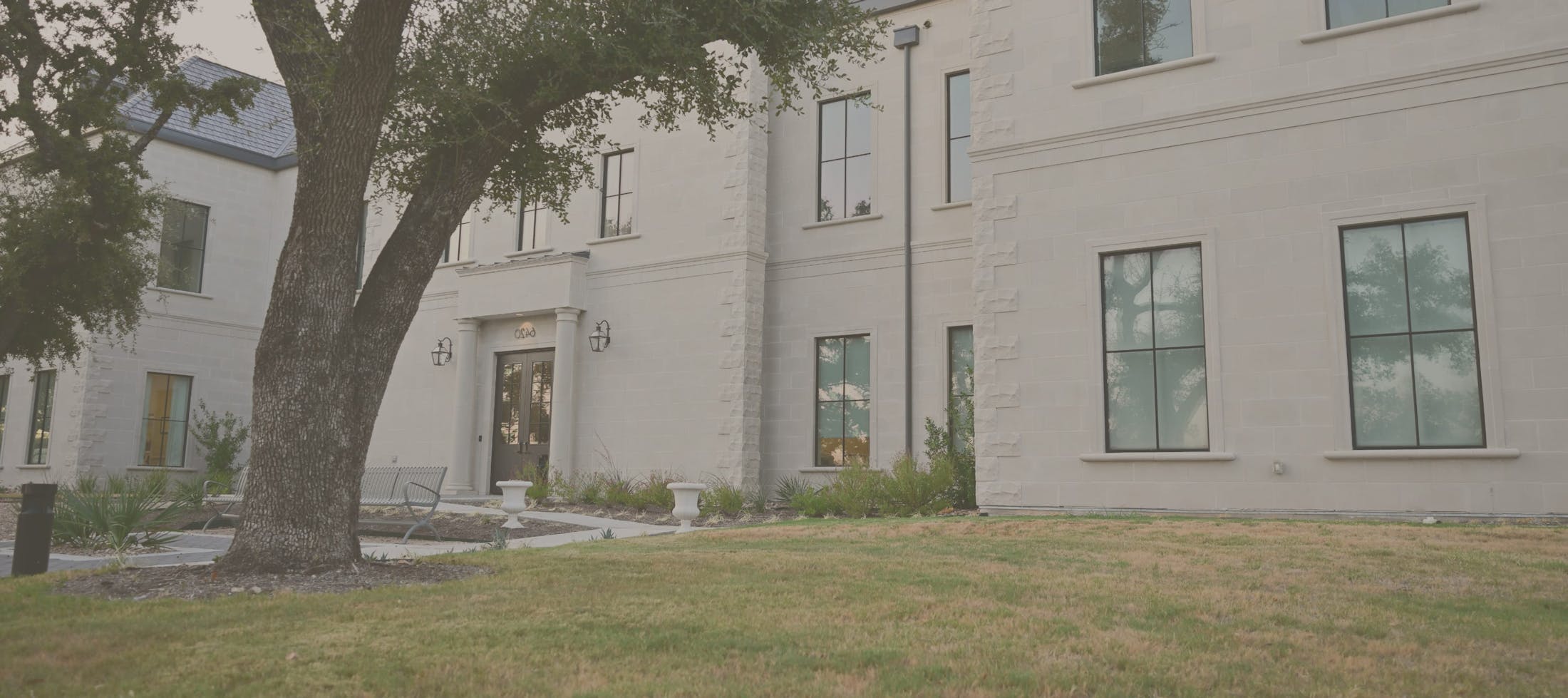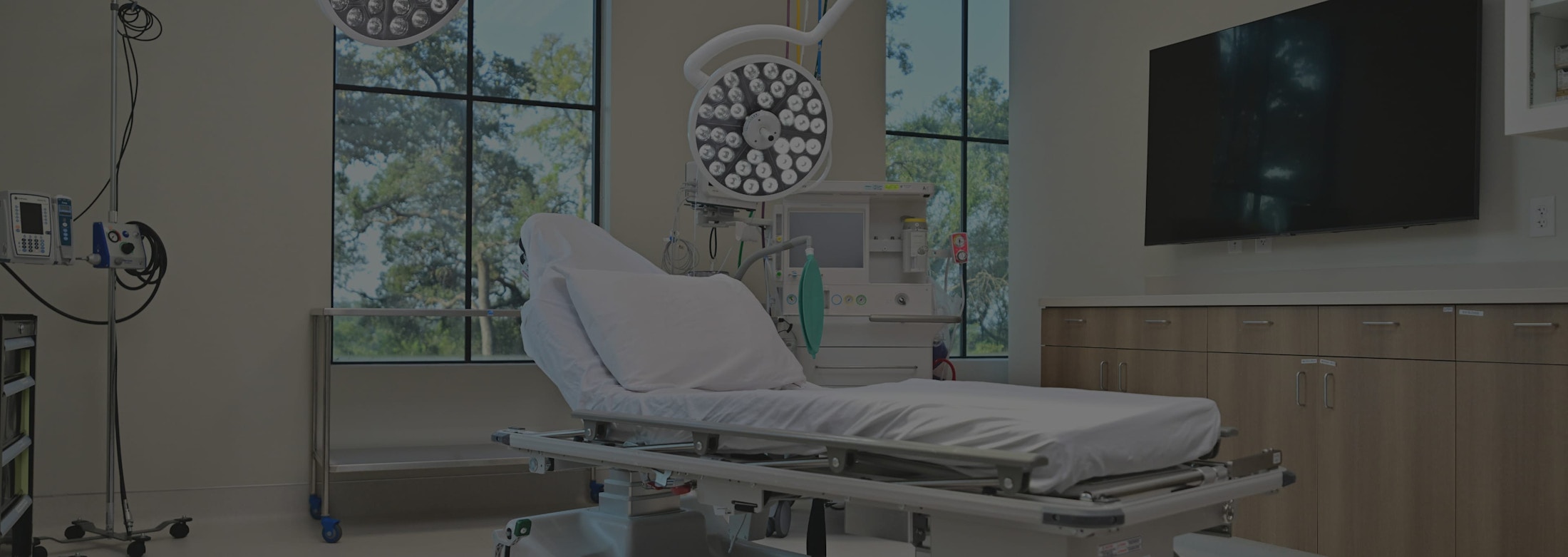Patients can expect their skin to feel warm for about an hour to two after their laser treatment session. To help relieve this short-lived side effect sooner, the providers at Buckingham Center will place a cooling mask on the patient’s skin immediately after treatment and provide ice packs that can be applied immediately post-treatment.
Following a Moxi Laser treatment on the face, patients need to refrain from applying makeup and irritating skincare products to their skin for at least 3 days after treatment. The provider performing treatment will instruct the patient to use a gentle cleanser, gentle moisturizer, and sunscreen for approximately one week following treatment, avoiding products that contain contain retinol, glycolic, or salicylic acid as well as exfoliating scrubs or washcloths. At this point, patients can also use a gentle cleanser, moisturizer, and sunscreen.
Your provider at Buckingham Center in Austin, Texas, may recommend a cleanser and moisturizer to use during this time. It is important to protect the skin as it heals, which is why after the initial 24 hours, patients need to apply a moisturizing, broad-spectrum sunscreen every day. These products not only protect the skin, they promote healing and keep the skin well hydrated. Following their laser treatment, patients must stay out of the sun for at least 48 hours. As the top layer of skin in the treatment areas sloughs off, the skin begins to repair itself. Patients can expect their skin to feel rougher than usual at this stage of the healing process. This sandpaper-like texture lasts for about 5-7 days, depending on treatment intensity.















